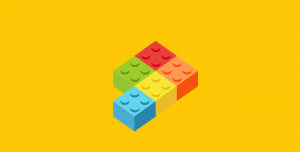For this step of the design process, we were focused on ideating different ways to breakdown and approach the design journal. To recap, our original broad HCW statement was:
How can we create a design journal that students can use to publish and share their projects? After reflecting on our key insights, and reframing, we narrowed our HCW statement to: How can we teach a reader human-centered design after reading one issue of the journal? Overall, our two main design goals are to convey the lessons learned during the design process, and to make “DFlAnguage” accessible to the broader community.
During our ideation, we were concerned with what content we wanted to include in our design journal. We broke our journal down into “content blocks” which would create the flexible framework of our journal. The content blocks would be modular components that can be mixed and matched to create a journal. In essence, these content blocks would act as small Legos that together, create something greater. In our ideation, we came up with three main blocks. The first is “make it accessible” content, which would explain the basics of DFA such as HCW statements, or the fundamental facts about a project. The next block was “obstacle course” content, which would focus on addressing issues that different studios may have come across to shed light on possible recurring issues and the solutions found. The last block was “spotlight” content which would zoom in on a specific project, user, community partner etc. An example of “spotlight” content would be an interview with a community partner.
MSR was a success and we gained some really great feedback from our fellow studio members and guests! Here is our presentation and some feedback.
- What are some words in DFlAnguage that you strive to clarify?
- Sexy slides
- Think about how to set up a sustainable framework for people to self-contribute (maybe it’s a platform)
- Really awesome connecting block examples back to key insights
- Do you intend for the design journal to also be used to teach the design process?
- How will you streamline content submission?
- How often would it be released?
We had some very interesting, and thought-provoking feedback which we will definitely take into consideration when moving forwards. Our next steps are sourcing content from various projects and then testing the content. As a low-fidelity prototype, we are considering Google Docs, but as we move towards high-fidelity prototype, we will be using InDesign.
